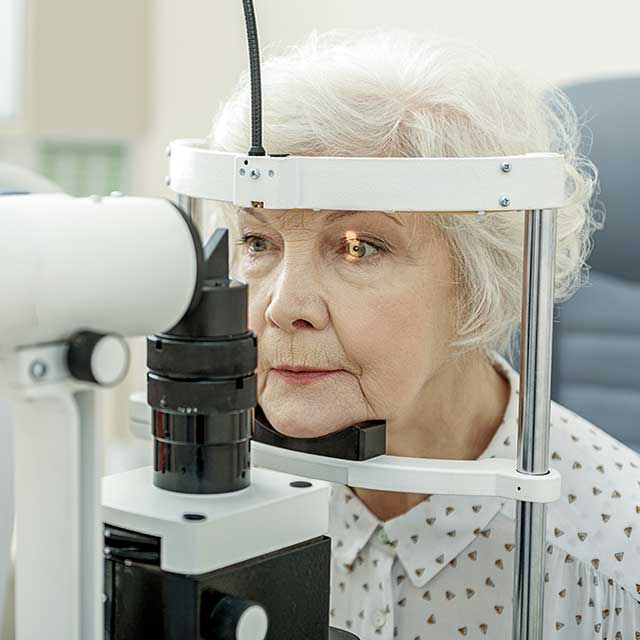While diabetes affects many facets of your health, the effect that diabetes has on the health of your eyes is profound and unique. Due to the generally higher high blood glucose levels for diabetics, certain changes in the integrity of the retina’s blood vessels may indicate a complicated and potentially dangerous eye condition.
People living with diabetes are at a higher risk of developing a number of eye conditions including glaucoma, cataracts, diabetic macular edema and diabetic retinopathy, which is the biggest threat to vision for those who have diabetes.
The population of adults with diabetes is between two and five times more likes to develop cataracts than similarly situated adults without diabetes. Additionally, diabetics are more likely to develop cataracts at a younger age. Similarly, studies have suggested that diabetes almost doubles the risk of developing glaucoma as compared to non-diabetics. Arguably, the chief concern with regards to eye health for diabetics is the risk of diabetic retinopathy. Diabetic macular edema is a result of diabetic retinopathy where part of the retina, the macula, becomes enlarged.
What Causes Diabetic Retinopathy?
Diabetic retinopathy occurs because of weakening or swelling of the tiny blood vessels inside of the eye, which can lead to hemorrhaging, new blood vessel growth and scarring. As the damage worsens, a person may experience blurry vision, less intense/clear vision and the gradual onset of lost vision; ultimately, if left untreated, diabetic retinopathy can lead to blindness. Indeed, diabetic retinopathy is the most cited cause of blindness among working-age adults.
While the main risk factor for diabetic retinopathy is diabetes, certain additional factors exacerbate one’s chances of developing diabetic retinopathy. Being pregnant is a factor and therefore, pregnant women who have diabetes are recommended to have more frequent eye exams.
A long-time diabetic and certainly the existence of additional medical conditions increase one’s likelihood of developing complications such as diabetic retinopathy. Managing one’s sugar levels at a safe level is the single most helpful means of preventing diabetic retinopathy.


How Can I Tell If I Have Diabetic Retinopathy?
In early stages, there may be no symptoms or symptoms that are so mild in degree that they are hardly noticeable, which further underscores why it is so crucial to have annual comprehensive eye exams. Unfortunately, for many the disease continues undetected until one’s vision becomes compromised.
The ADA recommends that people with type 1 diabetics should have a comprehensive dilated eye exam within 5 years of being diagnosed with diabetes with annual follow-ups and people with type 2 diabetes should have a comprehensive dilated eye exam as soon as diabetes is diagnosed along with annual follow-ups. While vision loss due to diabetic retinopathy is sometimes irreversible, early detection and active treatment can reduce the risk of blindness considerably.
Retinopathy affects 23 percent of people with type 1 diabetes and 14 percent of people with type 2 diabetes on insulin therapy.
You can reduce your risk of developing visual damage from Diabetic Retinopathy by:
- Visit your optometrist at least once per year.
- Maintain optimal blood glucose levels, blood pressure, and blood cholesterol.
- Know your A1C (a test of your average blood glucose level over three months). Most people with diabetes should aim for a target of 7.0 or less.
Many problems can be treated with greater success when caught early. So it is vital to see an experienced eye care professional regularly and keep blood glucose (sugar) levels well managed.
Diabetic Eye Examinations
In a diabetic eye exam, the doctor will dilate the eyes with topical medications, which will make the pupil larger, to check for changes or damage from diabetes including diabetic retinopathy, glaucoma, and cataracts.
The doctor may use advanced technologies such as Optical Coherence Tomography (OCT) and Digital Fundus photography to aid in the monitoring for these changes.
Be a good patient! When coming to the eye doctor for your diabetic eye exam, come in with notes.
- Have you been experiencing symptoms recently?
- Give some examples of the symptoms.
- When do the symptoms occur (make note of time, fatigue or any other factors)?
- Try to correlate the symptoms with your blood sugar levels when you experienced the symptoms.
- A list of any other health problems.
- Ask your eye doctor for tips and warning signs and vigilantly look for them.

